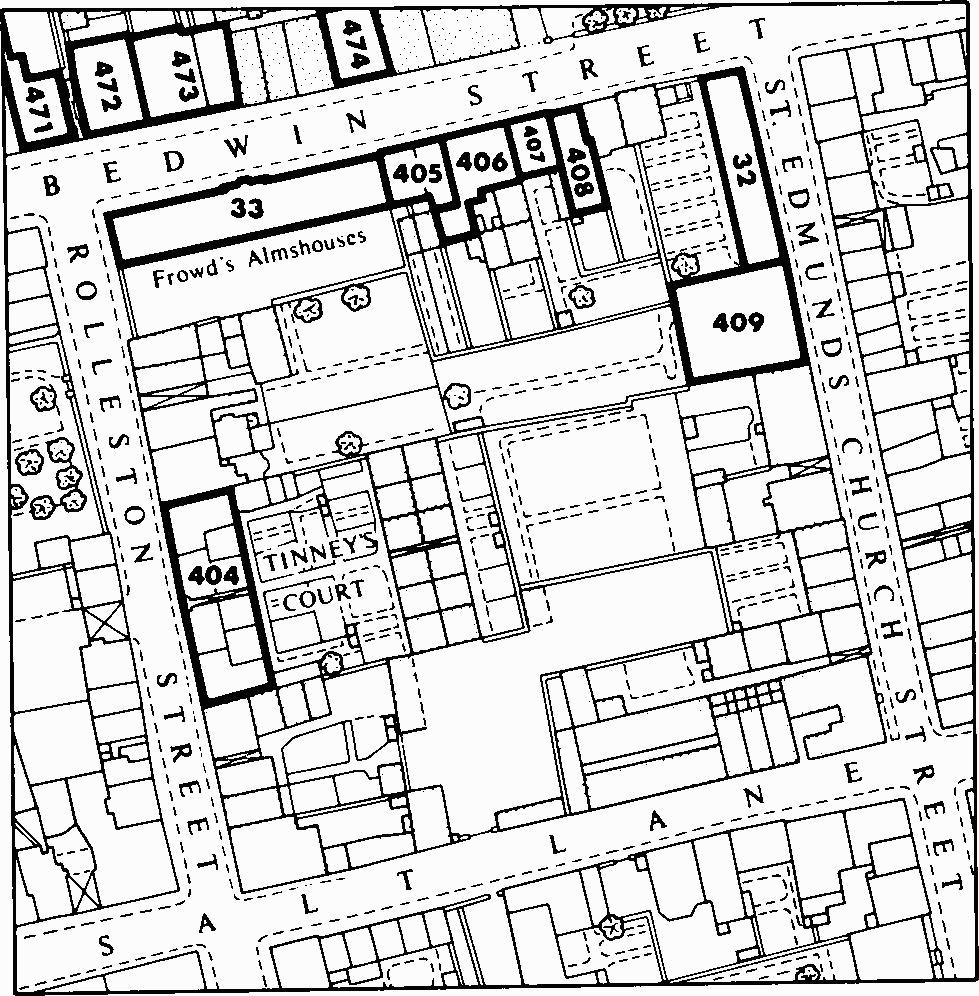Ancient and Historical Monuments in the City of Salisbury. Originally published by Her Majesty's Stationery Office, London, 1977.
This free content was digitised by double rekeying. All rights reserved.
'Parsons Chequer', in Ancient and Historical Monuments in the City of Salisbury(London, 1977), British History Online https://prod.british-history.ac.uk/rchme/salisbury/p146 [accessed 1 February 2025].
'Parsons Chequer', in Ancient and Historical Monuments in the City of Salisbury(London, 1977), British History Online, accessed February 1, 2025, https://prod.british-history.ac.uk/rchme/salisbury/p146.
"Parsons Chequer". Ancient and Historical Monuments in the City of Salisbury. (London, 1977), British History Online. Web. 1 February 2025. https://prod.british-history.ac.uk/rchme/salisbury/p146.
Parsons Chequer

Monuments in Parsons Chequer.
(404) Rolleston Place, terrace of four cottages, is two-storeyed with brick walls and slate-covered roofs. On O.S., 1880 it appears as the W. range of Tinney's Court. A tablet with an inscription of 1844 (?) at the centre of the W. front indicates the probable date of erection.
Frowd's Almshouses, see (33).
(405) Houses, two adjoining, Nos. 26–8 Bedwin Street, are three-storeyed with brick walls and slate-covered roofs and were built during the first quarter of the 19th century. In each house the N. front is of one bay. No. 28 has a mid 19th-century bow window in the second storey.
(406) House, No. 30, of two storeys with brick walls and tiled roofs, appears to date from early in the 18th century. The N. front is symmetrical and of three bays, with a central doorway, plain sashed windows and a blind recess over the doorway. A moulded brick string-course marks the level of the first floor. Inside, several rooms are lined with 18th and early 19th-century panelling.
(407) House, No. 32, of three storeys with brick walls and slate-covered roofs, was built c. 1840.
(408) House, No. 34, of two storeys with rendered timber-framed walls and tiled roofs, is of 16th-century origin, but it has been extensively altered. The N. front is jettied at the first floor. Inside, some original ceiling beams are exposed.
Taylor's Almshouses, see (32).
(409) House, No. 42 St. Edmund's Church Street, of two and three storeys with brick walls and tiled roofs, dates probably from 1787, the date on a lead rainwaterhead on the N. wall. The E. front is approximately symmetrical and of seven bays, with a round-headed central doorway and plain sashed windows; a doorway in the N. bay presumably gave access to the original service range. Inside, the two-storeyed E. range has a class–T plan. The three-storeyed W. range was added in the 19th century. Several rooms in the E. range have original chimney pieces; one has neo-classical enrichment. The stairs are of the 19th century.
